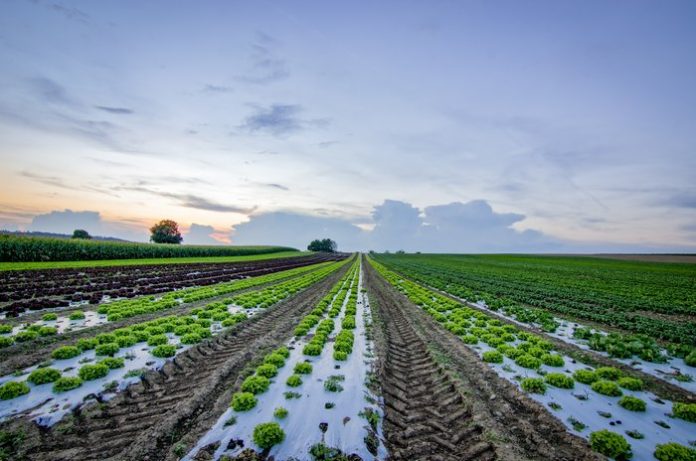It goes without saying that the condition of the soil is one of the most important factors in farming. It does not matter whether a particular farm focuses on arable production and producing crops or on raising livestock, whether the system is concentrated and commercialized or more traditional and pastoral: all farmers will need to pay attention to the condition of the soil and any changes that are taking place. One of the major advances that is currently taking place is the ability for farms to use IT and communications technologies to provide soil condition data, notably through the use of IoT in agriculture and IoT solutions.
Farmers can use an IoT project cost calculator and other IoT solutions to reduce workloads and costs, improve efficiency, save time and effort, and improve the accuracy and timeliness of data, helping to inform choices and decisions.
Soil data
When it comes to the condition of the soil, several aspects have to be considered. Some of the soil condition data that are of interest include:
- Soil moisture. The level of water within the soil is often known as ‘volumetric water content’: this is a measure of the amount of water held in the soil expressed as a percentage of the total mixture. The level of soil moisture is important when it comes to many aspects of farming, not least irrigation.
- Soil temperature has a relationship with soil moisture but is also important in its own right. Different crops have different optimum temperatures for growth, and it is important to be aware of changes in the soil temperature at different depths underground, looking through the vertical profile of the soil.
- Water level monitoring. While linked to soil moisture levels, in some farming locations being aware of the underlying water level is a separate factor that needs to be considered.
Sensors and remote monitoring
The use of IoT in agriculture is undertaken in a similar manner to that elsewhere: through the deployment of a network of sensors; collection, processing, integration and transmission of data; potentially automated decision triggering; and enhanced data visibility and ease of interrogation.
The types of sensors that can be used in agriculture are numerous but, as soilsensor.com states, in general they fit within a number of categories:
- Tensiometers, which measure soil water or soil matric potential and can be used to determine the available water held in the soil and soil water fluxes.
- Single point measurement. This is the largest type of sensor in that it measures an attribute — or more than one attribute depending on the specific sensor — that is present in a specific, single location.
- Soil profiling probes measure soil moisture — and sometimes other characteristics such as temperature — across a vertical soil profile, which usually is within the range of 30cm to 1.2m. Soil profiling probes typically consist of multiple single-point sensors housed within an elongated enclosure. Using soil profiling probes can often remove the need to use multiple sensors at different levels within the soil and resultant needs to excavate to reach the required level.
- Permanent and semi-permanent installations. These sensors can be left in place and used for long-term and/or permanent monitoring, whether using remote data feeds (through wireless) or through localized transmission for on-demand monitoring.
- Portable soil sensors. These sensors are normally hand-portable and are designed to give the user an instant readout of the soil conditions in a particular location, with results displayed typically through an app on a smartphone or on an integrated display.
Advantages
Such sensors have immediate uses within agriculture, with soil measurement IoT solutions offering an immediate number of advantages:
- Soil monitoring can help prevent over- or under-irrigation, enabling the optimum use of water — particularly important in areas subject to water scarcity.
- Irrigation monitoring, which enables the farmer to see how much of the water being used for irrigation actually gets to the desired location.
- Time and resource saving. Using fixed or semi-permanent sensors enables monitoring to be undertaken remotely, thus saving time and effort, reducing costs and increasing efficiency.
- Automated alerting when conditions change. One of the key advantages of many IoT solutions is that alerts can be raised when conditions change and go outside of certain parameters. The use of IoT in agriculture is no different and alerts can be issued when, for example, soil moisture levels drop below desired levels, thus advising regarding the need for watering.
Other uses
However, it is not just agriculture that can make extensive use of soil condition data and IoT solutions. Other potential uses include:
- Research, notably for biofuel and carbon dioxide sequestering studies,
- Erosion and land stability monitoring,
- Drought forecasting,
- Dust control,
- Weather monitoring networks,
- Soil toxicology assessment, and
- Specialized soil monitoring, for example on sport pitches, greens or turf.
All of these areas can make use of soil measurement IoT solutions, allowing the user to gather in an affordable and simple manner the data that is needed for their particular area of focus and then to be able to make more greatly informed decisions based on that.
Find a Home-Based Business to Start-Up >>> Hundreds of Business Listings.

















































